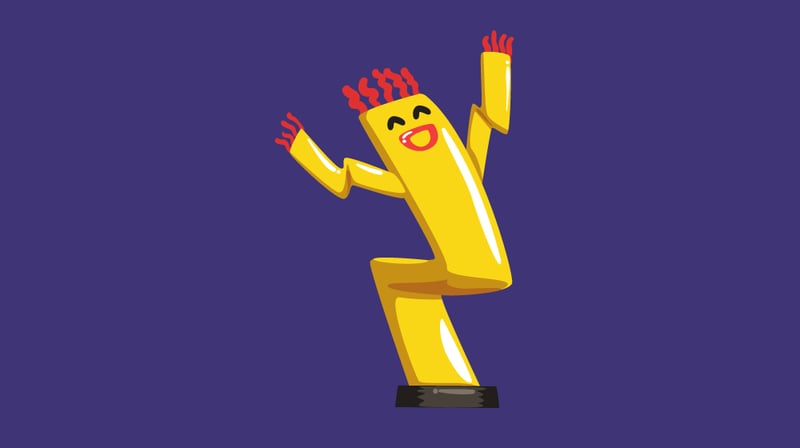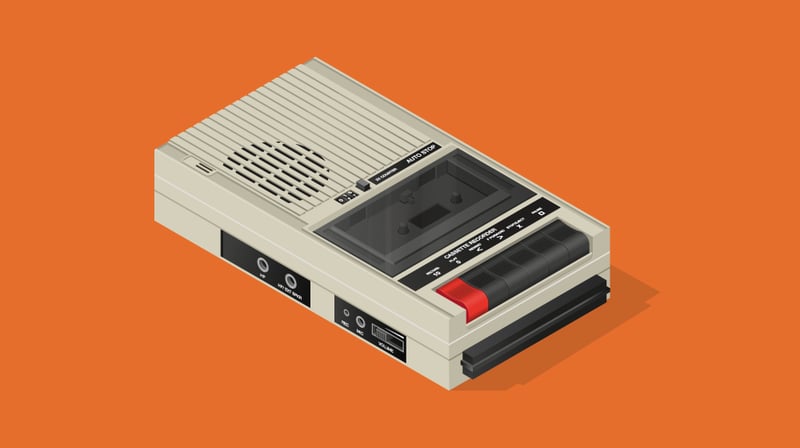You hopefully strive to be inclusive of every student’s sexuality, but does that include asexuality?
If not, then you’re likely overlooking the needs of at least 1% of your students. I’d like to help you fix that.
Let’s start with a definition:
“An asexual person is a person who does not experience sexual attraction.”
Okay, that’s pretty brief. Let’s dive in deeper.
Before you can develop campus-wide programs and adopt personal everyday practices to intentionally support asexual students (or aces, for short), you have to understand what students mean when they use that label.
So, I’ll start by busting some common myths. Then, I’ll share tips for making your institution as ace-inclusive as possible.
5 Common Myths
Myth #1: “Asexuality is the same as celibacy.”
Nope, sorry, it’s not that simple. Some asexual students might happen to also be celibate, but the words aren’t synonymous.
Celibacy is defined as:
“The state of voluntarily being unmarried, sexually abstinent, or both, usually for religious reasons.”
Now, go back and read the definition of asexuality again. Notice a difference?
The key is “voluntarily.” Celibacy is a conscious choice; asexuality isn’t. Just as no one chooses to be gay, straight, or bi, no one elects to be asexual. They just are.
In other words, asexuality is like any other type of sexuality; It indicates natural attraction (or lack thereof), not decisive action.
Myth #2: “Asexuals are ‘prudes’.”
Relatedly, being asexual says zilch about a person’s attitudes towards sex as a general concept. Asexuals aren’t trying to get anyone to abstain from sex, just as homosexual folx aren’t on a fervent anti-heterosexuality campaign.
Although they do not personally feel sexually attracted to anyone, asexuals can still support other people’s sexual activity. In other words, they can be sex-positive!
Some asexuals even have sex. Why, you ask? Well, they might enjoy connecting with their partner in that way, or maybe they’re trying to conceive. They might also be curious about what the fuss is all about or give in to peer pressure.
Plus, many people view asexuality and sexuality not as binary orientations but as ends on a wide spectrum.
Those who self-identify with the gray area between the two often consider themselves gray asexual (or gray-A).
Gray aces experience “sexual attraction very rarely, only under specific circumstances, or of an intensity so low that it’s ignorable.”
Additionally, a demisexual person does not experience sexual attraction unless they have formed a deep emotional connection with someone.
So, no, asexuals aren’t “prudes.” You don’t have to tiptoe around them, using G-rated code words and pretending that we live in a sexless society. You just need to acknowledge that sexual attraction isn’t innate to everyone.
Myth #3: “Asexual people have no interest in forming relationships of any sort.”
Here’s another thing asexuality says zilch about: A person’s need for socialization. The notion that asexual people are unemotional, antisocial, detached loners is not only degrading; it’s inaccurate.
It also implies that the only thing worth valuing about a romantic relationship is sex.
Think about all the other wonderful things you cherish in a relationship. Someone to laugh with, cry with, debate with, complain to — asexuals value all that, too.
And lest you think that asexuals only want platonic friendships, nope; wrong again. Many asexuals experience romantic attraction and desire romantic relationships. However, for them, sex isn’t a necessary component of romance.
These individuals often identify with romantic orientation labels — such as heteroromantic, homoromantic, biromantic, and panromantic — to indicate their romantic attraction to various genders.
There are also aromantic asexuals (aka aro aces), who don’t experience romantic attraction toward anyone. Yet, they too can be highly social. Many aromantic individuals crave longterm, intimate relationships, which friends and family members can satisfy, no romance needed.
Myth #4: ” “They’re not really asexual, just immature.”
Asexuality is not something a student will grow out of once they discover their “real” sexuality. The “it’s just a phase” notion is one asexual and bisexual individuals share, and it’s extremely hurtful. It dismisses their identities, belittles their experiences, and denies their self-assessment.
As explained in the Archives of Sexual Behavior, asexuality is not a mental disorder nor a type of sexual dysfunction. It’s a sexual orientation.
However, it’s important to remember that sexuality is complex. Just as a heterosexual or homosexual person’s sexual attraction can change and grow over time, surprising even the person experiencing it, asexuals may experience sexual attraction at some point.
But that won’t invalidate their previous asexuality, as it was true at the time. Labels aren’t any less valid just because they may change.
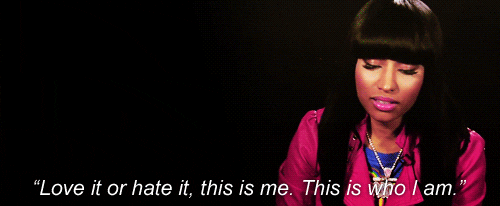
Myth #5: “Asexual people don’t face discrimination.”
You surely know that members of the LGBT community face discrimination, with hatred towards lesbian, gay, bisexual, and transgender individuals rampant worldwide.
But you might think asexuals get off scot-free. After all, it’s defined by a lack of something (sexual attraction) rather than by an observable action.
Well, sadly that’s not that case. Acephobia is real.
It often, however, manifests itself in ways that are different from other types of sexual discrimination, and therefore, may not be obvious to non-asexuals.
Here are some examples:
- A 2012 study found that people evaluated asexuals “more negatively” and viewed them as “less human and less valued as contact partners, relative to heterosexuals and other sexual minorities.” This included college students, as part of the survey was conducted exclusively with undergraduates at a Canadian university.
- Of the nearly 8,000 volunteer asexual respondents to the 2015 “Asexual Community Census,” 43.5% reported having experienced some form of sexual violence, including rape, assault, and coercion. This includes so-called “corrective rape” in which assailants try to “fix” victims. And asexual assault survivors often struggle to be believed even more than other survivors.
- Many online and app-based dating services lack the option for users to identify as asexual. Not only does this hurtfully ignore their identity, but it can make it especially challenging for aces to find romantic partners.
Asexuality is also widely misunderstood. Of the 1,119 respondents to a UK poll, only 53% said they were confident in explaining the term. Then, when put to the test, a whopping 75% of respondents got it wrong.
Although misconceptions and myths may be more due to ignorance than hate, they can still make asexuals feel ridiculed and outcasted. So-called “jokes” like “I bet I can change your mind” or “No one is ever going to want to be with you” are no laughing matter.
Fortunately, as a student affairs professional, you can help asexual students feel seen, understand, and welcome as their true, authentic selves. It doesn’t require becoming an expert on sexuality nor a psychologist; it just requires thoughtfulness and intentionality.
Here are some tips to get you started.
5 Inclusion Tips
Tip #1: Avoid assumptive language.
Avoid language that assumes that all students (and humans more broadly) experience sexual attraction, are tempted by sex, and/or having sex in college. Ditto romantic attraction.
Statements like “it’s just human nature” or “everybody does it” related to sex and romance may be wonderfully affirming for many of your students, but it won’t be reflective of all students’ experiences. It can make asexual students feel like something is wrong with them, as if their feelings are inhuman or unnatural.
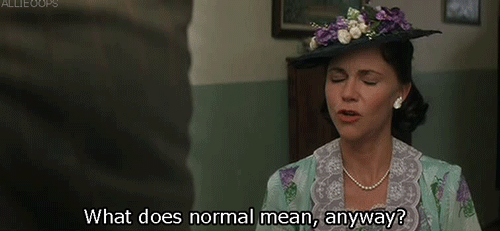
This isn’t to say you should avoid discussing sex or say anything that implies it’s shameful. Rather, you should expand your language to capture the diverse array of human sexuality — which includes a lack of sexual attraction.
Avoid, for example, doing an icebreaker in which students share their celebrity crushes. Not everyone will have a crush. And don’t try to gauge a student’s social life by asking if they’re dating anyone, unless you happen to know that they’re interested in that. Instead, you can ask, “Have you made friends?” or “Have you connected with your peers here?”
You can also encourage student organizations not to hold events in which romantic dates are expected or required. Sure, attendees can still bring dates if they wish, but don’t call it a “date night” or use romantic themes like “romance under the stars,” which imply that platonic friends aren’t worthy plus-ones.
You’re probably already careful to not assume that all male students are interested in dating women, or that all female students want boyfriends. That’s great! Now, go further. Along with tossing out heteronormative assumptions, expel the assumption that all students experience sexual attraction.
Tip #2: Use “asexual” correctly.
This tip is short, but it’s a critical one: Don’t use “asexual” as an insult.
It doesn’t mean boring, antisocial, awkward, or immature. It means “a person who doesn’t experience sexual attraction.” That’s it; use it only for that.
Conflating asexuality with a disinterest in dating, romance, or marriage isn’t accurate either. Remember: Some asexual folks are indeed interested in these things. Denying that ignores their full identities and the realities of asexuality. “Aromantic” is the word you’re looking for here, and it also should never be wielded as an insult; it’s just another form of human diversity.
If you hear anyone use “asexual” or “aromantic” in jest, call it out, just as you hopefully would for other LGBTQI+ slurs.
However, rather than antagonizing someone for their acephobia, use it as an opportunity to educate them. They might simply be unaware of what asexuality actually is. Have them read this blog post, check out this great resource from Duke University, or watch this video.
Tip #3: Offer asexuality programming.
Despite widespread agreement that the ‘A’ in LGBTQIA+ stands for “asexuality” , it’s frequently left out of such spaces, programs, and discussions. This can make asexual students feel ignored within spaces that are supposedly set up for them.
So, you should work to ensure that anything you offer with an LGBTQIA+ label is inclusive of asexuals in more than just name.
In addition to ace-inclusive language, programs can involve the ace flag, asexual speakers, and opportunities for asexual students to connect with one another. You can do a few rounds of “speed friend-ing” (rather than speed dating), hang up an ace-inclusive space poster, or screen the film (A)sexual.
It’s also important to have these discussions and displays with students who aren’t asexual, too, so that they can better understand asexuality and become allies. This is how you can begin to shift institutional culture and make the entire campus ace-friendly.
This isn’t to say that you should stop hosting events that are primarily targeted toward lesbian, gay, bi, transgender, or intersex students. Keep those coming. Students still need them.
But you should be clear about who your LGBTQIA+ programming is for. Don’t include the ‘A’ in events that only acknowledge the needs of other marginalized identities. And then, be sure to also offer ace-friendly programs and widely advertise them as such.
(I suggest including the definition of asexuality on posters and social media posts for these events so that anyone who views the advertisement gets a quick education on asexuality.)
Ideally, you should empower students to develop and lead their own programs, perhaps through an asexual student organization. This article has some great examples of students and institutions doing just that.
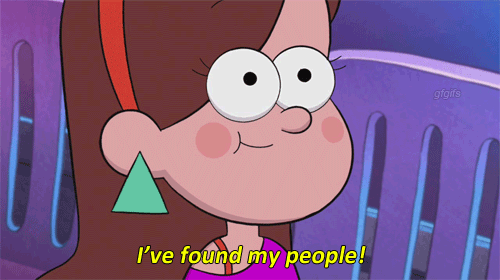
Finally, keep in mind that LGTBQIA+ identities aren’t mutually exclusive. A transgender or intersex student may also identify as asexual. And, though it may surprise you, many asexual individuals also identify as lesbian, gay, bi, or otherwise queer, as a reflection of their romantic orientation. (Remember the terms homoromantic, biromantic, and panromantic?)
So, even in programs targeted to lesbian, gay, or bi students, you must consider that some attendees may have little or no interest in sex.
Tip #4: Stay educated on asexuality.
I know this can all seem extremely murky — even baffling. But such is the nature of sexuality and identity.
People aren’t easy to pin down nor understand. It’s vital, however, to try. Even if asexuality may complicate some of our traditional or progressive notions about human nature, these students deserve our support.
Again, I’m not imploring you to become an expert on all things sexuality. (Unless you work in an LGBTQIA+ office. Then, yes, that’s quite literally your job.) But you should know the basics.
Consider how disheartening it would be for a student to tell you they’re asexual, only to be met with a dismissal or a blank stare. They (hopefully) observe you working hard to understand and celebrate students of other underrepresented identities. So, why not them?
Your lack of knowledge can make asexual students feel unimportant. Worse yet, it can make them wary of coming out or living authentically.
So, be prepared. Understand the basics of asexuality so that no student has to go through the emotional labor of explaining it to you. Read stories about asexual people and their lives. Consider hosting a Asexuality 101 event so that the larger student body will understand it, too.
And show that you acknowledge the existence and validity of asexuality by mentioning it, unprompted, in your everyday work. Include “asexual” as a marker in identity surveys, feature it in LGBTQIA+ education, call out acephobia, and celebrate Asexual Awareness Week. Having one of these posters or flyers in your office or by your desk can also signal your support to students who visit your space.
In a world in which asexual students may feel unseen, simply remembering their existence and showcasing your awareness can go a long way in boosting students’ confidence in themselves and trust in you.
Tip #5: Stay curious.
Remember: No two asexual students are exactly alike. Some asexuals desire romance, some don’t. Some asexuals have sex, some don’t. Some asexuals see themselves as queer, others don’t.
I could go on and on. As such, your curiosity should go on and on. This means wanting to learn more about individual students. If someone tells you they’re asexual, don’t assume you know everything about them merely because you read this blog post or any other resource. If a student is so inclined, give them the space to reveal more about their identity. Don’t run; listen.
Whenever possible, empower asexual students to tell their own narratives and develop campus-wide initiatives — with your full support and logistical guidance.
Duke University and Carleton College have asexual student organizations, which you may be able to learn from. And although it’s written for high schools, the program ideas and resources in this e-book might be helpful.
Find the right mix of educating yourself and asking others to educate you. Striking that delicate balance will require honest conversations with students and co-workers.
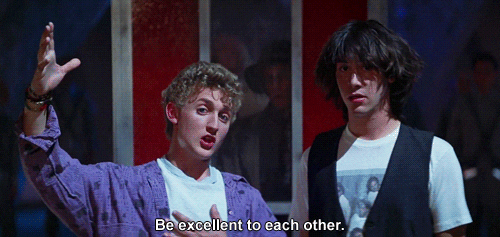
What have you done to support asexual students? What questions about asexuality do you still have? Chat with us over at @themoderncampus.




